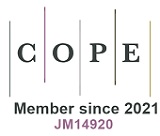Progestogen Profiling Over the Course of Diapause and Resumption of Embryo Development in the European Roe Deer
Downloads
Progesterone (P4) plays a pivotal role in maintenance of pregnancy in many mammalian species. Species-specific P4 metabolites have been shown to function as primary acting progestogen and the receptor binding capacity varies between species. The European roe deer (Capreolus capreolus) displays a 4-5 month period of embryonic diapause, which decouples fertilization from implantation. The majority of roe deer have two corpora lutea that secrete P4. No changes in P4 concentrations have been observed during pre-implantation embryo development. As 5?-DHP is known to play a major role during pregnancy in elephants and horses, we hypothesized that 5?-DHP functions as additional progestogen facilitating embryo reactivation. The profile of 11 progestogens was quantified in roe deer plasma over the course of diapause and resumption of embryo development including P4, 3?- and 3?-DHP, 20?- and 20?-DHP, 5?- and 5?-DHP, 3?,5?- and 3?,5?-THP, as well as 3?,5?- and 3?,5?-THP. While P4 was most abundant during diapause and resumption of development, 20?-DHP was the most abundant P4 metabolite. This is different than in pregnant elephants, where 5?-DHP was most abundant, and the luteal phase in cattle, where 3?,5?-THP was most abundant. With the exception of a weak correlation of 3?,5?-THP, none of the progestogens significantly correlated with embryonic development in the roe deer. Thus, plasma 5?-DHP does not seem to play a role in embryo reactivation. We propose that progestogens might contribute to priming the endometrium for supporting embryo development and preparation for implantation.
Downloads
Noguchi, M., Yoshioka, K., Itoh, S., Suzuki, C., Arai, S., Wada, Y., . . . Kaneko, H. (2010). Peripheral concentrations of inhibin A, ovarian steroids, and gonadotropins associated with follicular development throughout the estrous cycle of the sow. Reproduction, 139(1), 153-161. doi:10.1530/rep-09-0018.
Soede, N. M., Langendijk, P., & Kemp, B. (2011). Reproductive cycles in pigs. Anim Reprod Sci, 124(3-4), 251-258. doi:10.1016/j.anireprosci.2011.02.025.
Forde, N., Beltman, M. E., Lonergan, P., Diskin, M., Roche, J. F., & Crowe, M. A. (2011). Oestrous cycles in Bos taurus cattle. Animal Reproduction Science, 124(3-4), 163–169. doi:10.1016/j.anireprosci.2010.08.025.
Bischoff, T. L. W. (1854). Die Entwicklungsgeschichte des Rehes: Giessen, J. Bicker'sche Buchhandlung.
Keibel, F. (1902). Die Entwicklung des Rehes bis zur Anlage des Mesoblast. . Anat. Physiol. Suppl. 292.
Drews, B., Rudolf Vegas, A., van der Weijden, V. A., Milojevic, V., Hankele, A. K., Schuler, G., & Ulbrich, S. E. (2019). Do ovarian steroid hormones control the resumption of embryonic growth following the period of diapause in roe deer (Capreolus capreolus)? Reprod Biol. doi:10.1016/j.repbio.2019.04.003.
Sempere, A. J., Mauget, R., & Chemineau, P. (1992). Experimental induction of luteal cyclicity in roe deer (Capreolus capreolus). Reproduction, 96(1), 379–384. doi:10.1530/jrf.0.0960379.
Hoffmann, B., Barth, D., & Karg, H. (1978). Progesterone and Estrogen Levels in Peripheral Plasma of the Pregnant and Nonpregnant Roe Deer (Capreolus capreolus). Biology of Reproduction, 19(5), 931–935. doi:10.1095/biolreprod19.5.931.
Short, R. V., & Hay, M. F. (1966). Delayed Implantation in the roe deer Capreolus capreolus. In I. W. Rowlands (Ed.), Comparative Biology of Reproduction in Mammals (pp. 173-194). New York: Academic Press.
Sempere, A. J., Renaud, G., & Bariteau, F. (1989). Embryonic development measured by ultrasonography and plasma progesterone concentrations in roe deer (Capreolus capreolus L.). Animal Reproduction Science, 20(2), 155–164. doi:10.1016/0378-4320(89)90072-9.
Lambert, R., Ashworth, C., Beattie, L., Gebbie, F., Hutchinson, J., Kyle, D., & Racey, P. (2001). Temporal changes in reproductive hormones and conceptus-endometrial interactions during embryonic diapause and reactivation of the blastocyst in European roe deer (Capreolus capreolus). Reproduction, 863–871. doi:10.1530/rep.0.1210863
Schams, D., Barth, D., & Karg, H. (1980). LH, FSH and progesterone concentrations in peripheral plasma of the female roe deer (Capreolus capreolus) during the rutting season. Reproduction, 60(1), 109–114. doi:10.1530/jrf.0.0600109.
Lambert, R. T. (1999). Conceptus-endometrial interactions and reproductive hormone profiles during embryonic diapause and reactivation of the blastocyst in the European roe deer (Capreolus capreolus). Rangifer, 19(1), 41. doi:10.7557/2.19.1.294.
Scholtz, E. L., Krishnan, S., Ball, B. A., Corbin, C. J., Moeller, B. C., Stanley, S. D., … Conley, A. J. (2014). Pregnancy without progesterone in horses defines a second endogenous biopotent progesterone receptor agonist, 5α-dihydroprogesterone. Proceedings of the National Academy of Sciences, 111(9), 3365–3370. doi:10.1073/pnas.1318163111.
Hankele, A. K., Rehm, K., Berard, J., Schuler, G., Bigler, L., & Ulbrich, S. E. (2020). Progestogen profiling in plasma during the estrous cycle in cattle using an LC-MS based approach. Theriogenology, 142, 376–383. doi:10.1016/j.theriogenology.2019.10.005.
Schwarzenberger, F., Son, C. H., Pretting, R., & Arbeiter, K. (1996). Use of group-specific antibodies to detect fecal progesterone metabolites during the estrous cycle of cows. Theriogenology, 46(1), 23–32. doi:10.1016/0093-691x(96)00138-0.
Skinner, D. C., Evans, N. P., Delaleu, B., Goodman, R. L., Bouchard, P., & Caraty, A. (1998). The negative feedback actions of progesterone on gonadotropinreleasing hormone secretion are transduced by the classical progesterone receptor. Proceedings of the National Academy of Sciences, 95(18), 10978–10983. doi:10.1073/pnas.95.18.10978.
Jewgenow, K., & Meyer, H. H. D. (1998). Comparative Binding Affinity Study of Progestins to the Cytosol Progestin Receptor of Endometrium in Different Mammals. General and Comparative Endocrinology, 110(2), 118–124. doi:10.1006/gcen.1997.7054.
Mulac-Jericevic, B., & Conneely, O. M. (2004). Reproductive tissue selective actions of progesterone receptors. Reproduction, 128(2), 139–146. doi:10.1530/rep.1.00189.
Meyer, H. H., Jewgenow, K., & Hodges, J. K. (1997). Binding activity of 5alpha-reduced gestagens to the progestin receptor from African elephant (Loxodonta africana). Gen Comp Endocrinol, 105(2), 164-167. doi:10.1006/gcen.1996.6813.
Hodges, J. K. (1998). Endocrinology of the ovarian cycle and pregnancy in the Asian (Elephas maximus) and African (Loxodonta africana) elephant. Anim Reprod Sci, 53(1-4), 3-18. doi:10.1016/s0378-4320(98)00123-7.
Wierer, M., Schrey, A. K., Kühne, R., Ulbrich, S. E., & Meyer, H. H. D. (2012). A Single Glycine-Alanine Exchange Directs Ligand Specificity of the Elephant Progestin Receptor. PLoS One, 7(11), e50350. doi:10.1371/journal.pone.0050350.
Schwarzenberger, F., Mostl, E., Bamberg, E., Pammer, J., & Schmehlik, O. (1991). Concentrations of progestagens and oestrogens in the faeces of pregnant Lipizzan, trotter and thoroughbred mares. J Reprod Fertil Suppl, 44, 489-499.
Renfree, M. B., & Fenelon, J. C. (2017). The enigma of embryonic diapause. Development, 144(18), 3199–3210. doi:10.1242/dev.148213.
Van der Weijden, V. A., Puntar, B., Rudolf Vegas, A., Milojevic, V., Schanzenbach, C. I., Kowalewski, M. P., … Ulbrich, S. E. (2019). Endometrial luminal epithelial cells sense embryo elongation in the roe deer independent of interferon-tau. Biology of Reproduction. doi:10.1093/biolre/ioz129.
Vacas, M. I., Lowenstein, P. R., & Cardinali, D. P. (1979). Characterization of a cytosol progesterone receptor in bovine pineal gland. Neuroendocrinology, 29(2), 84-89. doi:10.1159/000122909.
Ashley, R. L., Arreguin-Arevalo, J. A., & Nett, T. M. (2009). Binding characteristics of the ovine membrane progesterone receptor alpha and expression of the receptor during the estrous cycle. Reproductive Biology and Endocrinology, 7(1), 42. doi:10.1186/1477-7827-7-42.
Pasqualini, J. R., & Chetrite, G. (2008). The anti-aromatase effect of progesterone and of its natural metabolites 20alpha- and 5alpha-dihydroprogesterone in the MCF-7aro breast cancer cell line. Anticancer Res, 28(4b), 2129-2133.
Pape-Zambito, D. A., Magliaro, A. L., & Kensinger, R. S. (2008). 17β-Estradiol and Estrone Concentrations in Plasma and Milk During Bovine Pregnancy. Journal of Dairy Science, 91(1), 127–135. doi:10.3168/jds.2007-0481.
Hoversland, R. C., Dey, S. K., & Johnson, D. C. (1982). Catechol estradiol induced implantation in the mouse. Life Sci, 30(21), 1801-1804. doi:10.1016/0024-3205(82)90316-2.
Stromberg, J., Haage, D., Taube, M., Backstrom, T., & Lundgren, P. (2006). Neurosteroid modulation of allopregnanolone and GABA effect on the GABA-A receptor. Neuroscience, 143(1), 73-81. doi:10.1016/j.neuroscience.2006.07.031.
Concas, A., Mostallino, M. C., Porcu, P., Follesa, P., Barbaccia, M. L., Trabucchi, M., . . . Biggio, G. (1998). Role of brain allopregnanolone in the plasticity of gamma-aminobutyric acid type A receptor in rat brain during pregnancy and after delivery. Proc Natl Acad Sci U S A, 95(22), 13284-13289. doi:10.1073/pnas.95.22.13284.
Rüegg, A. B., Bernal-Ulloa, S. M., Moser, F., Rutzen, I., & Ulbrich, S. E. (2019). Trophectoderm and Embryoblast of the European Roe Deer (Capreolus capreolus) both proliferate at slow pace during Embryonic Diapause (Submitted).
Friendly, M. (2002). Corrgrams. The American Statistician, 56(4), 316–324. doi:10.1198/000313002533.
Wickham, H. (2016). ggplot2: Elegant Graphics for Data Analysis: Springer-Verlag New York.
- This work (including HTML and PDF Files) is licensed under a Creative Commons Attribution 4.0 International License.












